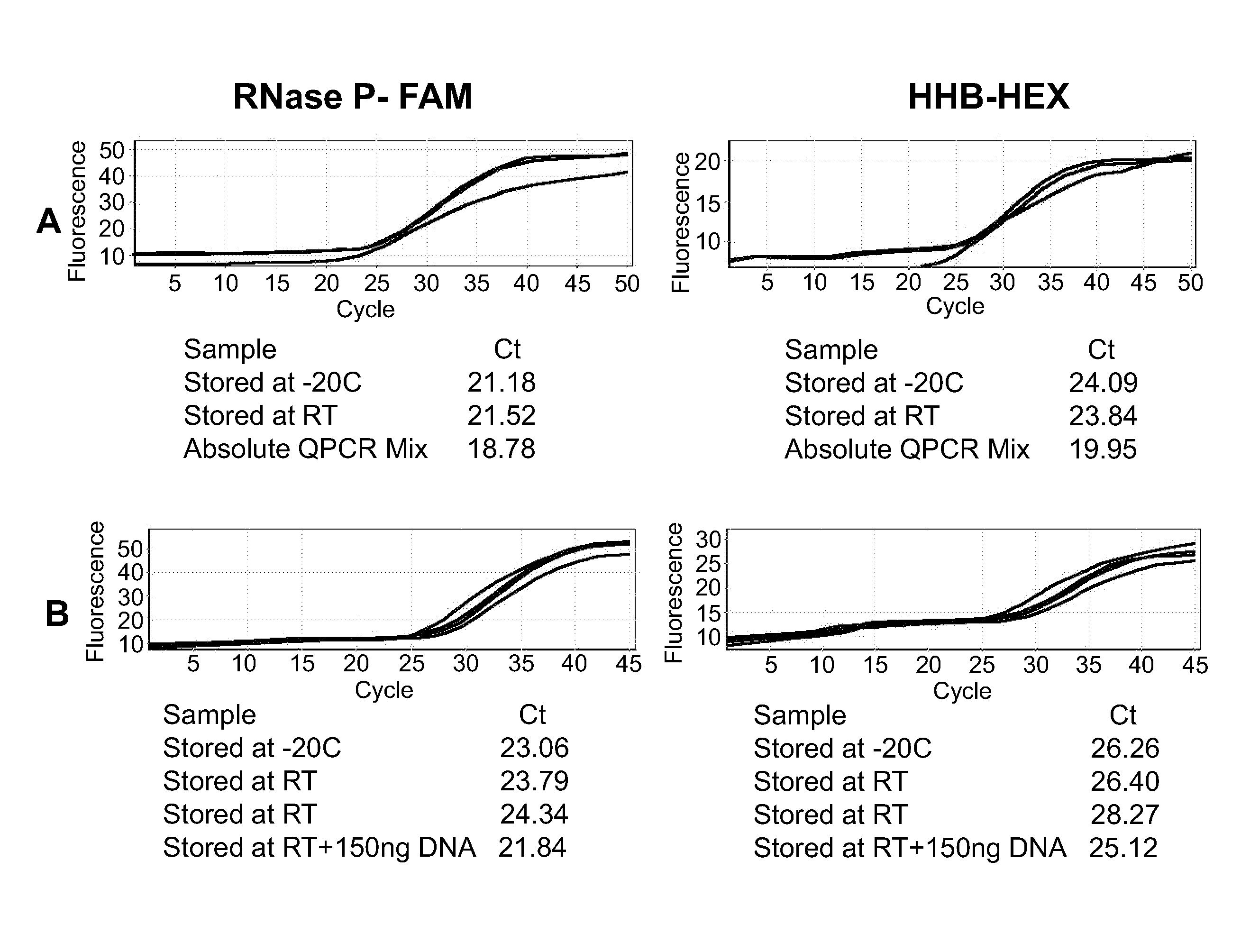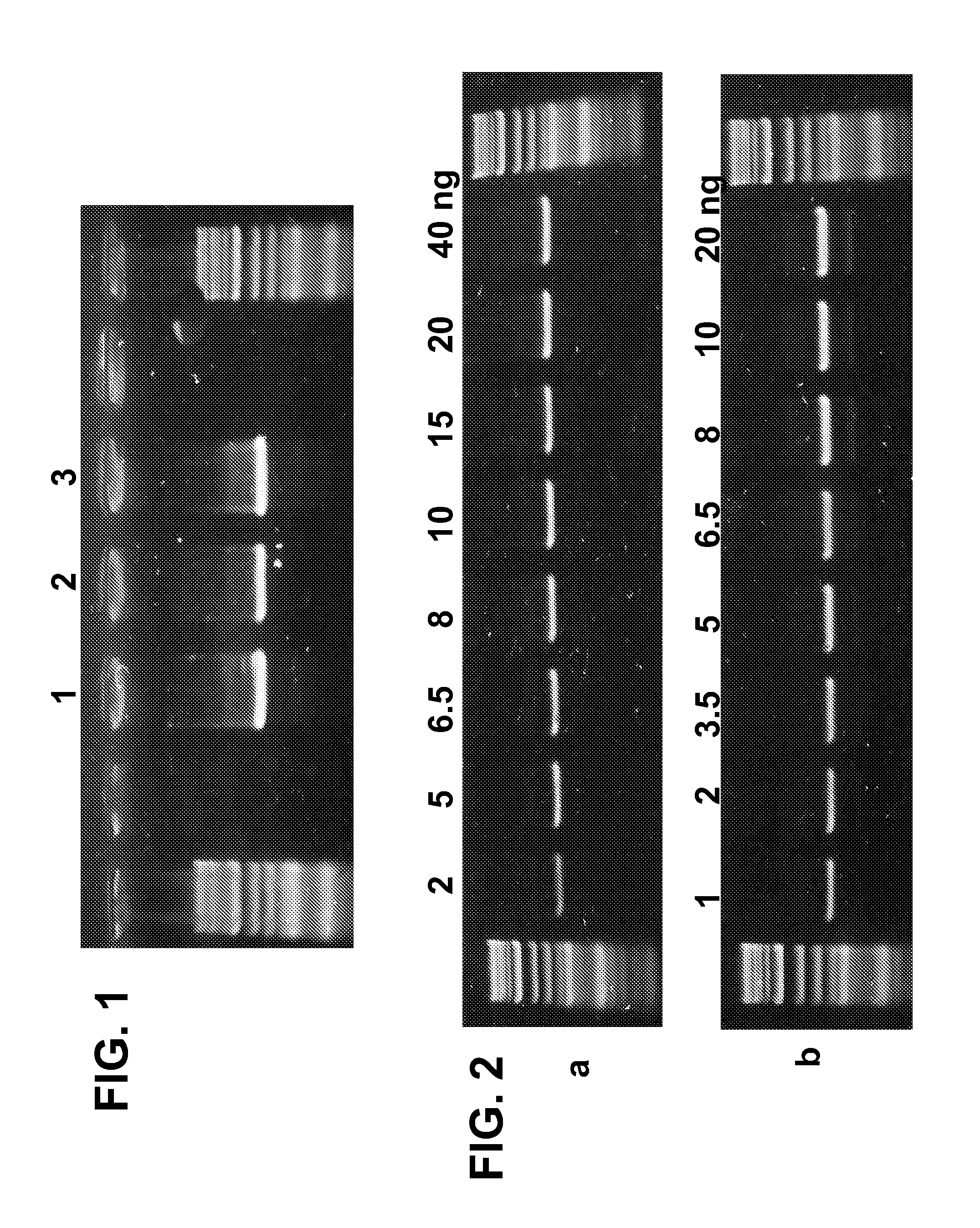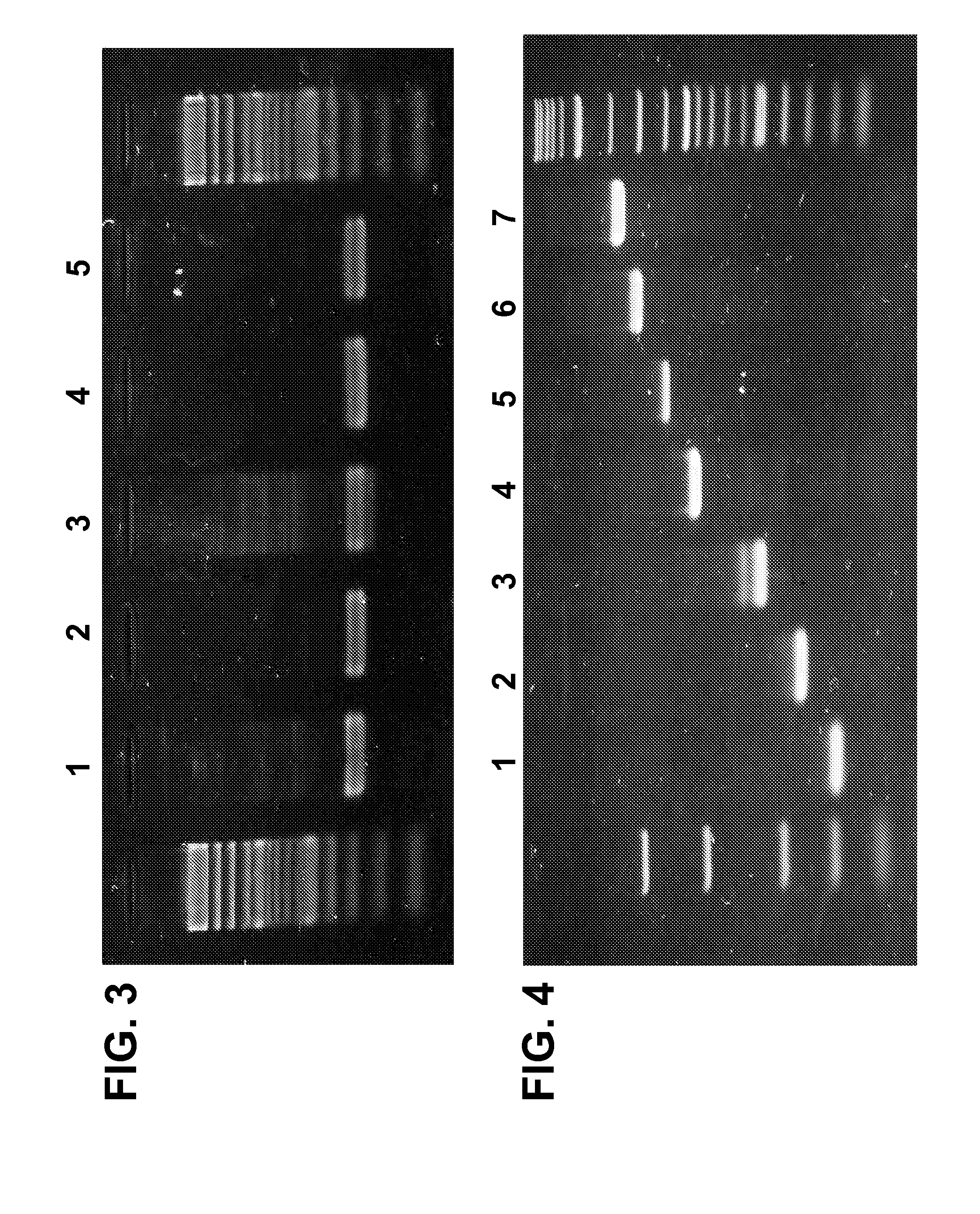Ambient Temperature Stable Kits for Molecular Diagnostics
a technology of molecular diagnostics and kits, applied in the direction of enzyme stabilisation, enzymology, transferases, etc., can solve the problems of false positive response, false negative, and substantive contamination risk in the process of preparing a pcr reaction mixture, so as to reduce the solution mixture and reduce the hydration
- Summary
- Abstract
- Description
- Claims
- Application Information
AI Technical Summary
Benefits of technology
Problems solved by technology
Method used
Image
Examples
example 1
PCR Mixes Performance
[0122] In a first experiment, the thermophilic DNA polymerase activity within the colored PCR Regular Mix was evaluated. The colored PCR regular mix was amplified: (1) with no further treatment (wet mix), (2) was heated at 550 C to reduce hydration and re-hydrated prior to amplification, or (3) was frozen at −200 C, lyophilized over night and re-hydrated prior to amplification.
[0123] Sixty nanograms of genomic DNA were amplified to obtain an 1800 bp PCR product (APC gene, primers SEQ ID 21 & 22) according to the following protocol: 3 min at 950 C, followed by 35 cycles of 30 sec at 950 C; 60 sec at 590 C, 2 min at 720 C and a final step of 10 min at 720 C. PCR amplified products were separated in a 1.5% agarose gel and stained with ethidium bromide.
[0124] As seen in FIG. 1, similar activity could be detected in the three samples. Therefore it can be concluded that the mix composition in which the drying process of the invention is taking place protects the en...
example 2
Shelf Life Extension of the PCR Mixes of the Invention
[0137] To estimate the shelf life of the PCR mixes of the invention, separate tests were performed for the regular thermophilic DNA polymerases and the Hot Start enzyme containing mixes.
[0138] In an accelerated shelf life test for the stabilized Hydration Reduced PCR mix containing regular DNA polymerase, the mix containing tubes were incubated for 0, 1, 3, 6 and 8 hrs at 950 C and tested for PCR amplification efficiency of the PLP gene (Table 1). Human genomic DNA (25 ng) was amplified using the following PCR protocol: 3 min at 950 C, 35 cycles of 30 sec at 950 C; 60 sec at 590 C, 2 min at 720 C, and a final cycle of 10 min at 720 C. Although a decline in the enzyme activity can be perceived (FIG. 7b), the enzyme exhibited strong performance even after 8 hrs incubation at such high temperature.
[0139] Based on the Ahrenius accelerated shelf life test (ASLT) model and previous experiments in which the Q10 value was determined, ...
example 3
PCR Ready Mixes with Incorporated Primers and Internal Control
[0145] A PCR assay mixture containing a positive control typically includes one set of oligonucleotide primers that are directed to a specific genetic region that is unique to the target DNA and a second set of oligonucleotide primers directed to a different genetic region that is common to a broader family of DNA. An internal control includes the elements of the above assay plus a sample of the DNA that contains the genetic region of the control primers and does not contain the unique genetic region of the target DNA.
[0146] In order to design an internal control for the PCR reaction, a synthetic DNA segment comprising the sequences of the ACTB primers (SEQ ID 7 & 8) was prepared and purified. This synthetic segment, also referred as the positive control template, was combined together with a ACTB forward and reverse primer mix and added to the PCR mixes of the invention prior to the hydration reduction process. Tubes c...
PUM
| Property | Measurement | Unit |
|---|---|---|
| Temperature | aaaaa | aaaaa |
| Temperature | aaaaa | aaaaa |
| Temperature | aaaaa | aaaaa |
Abstract
Description
Claims
Application Information
 Login to View More
Login to View More - R&D
- Intellectual Property
- Life Sciences
- Materials
- Tech Scout
- Unparalleled Data Quality
- Higher Quality Content
- 60% Fewer Hallucinations
Browse by: Latest US Patents, China's latest patents, Technical Efficacy Thesaurus, Application Domain, Technology Topic, Popular Technical Reports.
© 2025 PatSnap. All rights reserved.Legal|Privacy policy|Modern Slavery Act Transparency Statement|Sitemap|About US| Contact US: help@patsnap.com



